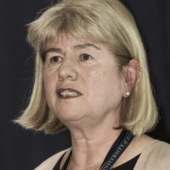THIS ARTICLE IS MORE THAN FIVE YEARS OLD
This article is more than five years old. Autism research — and science in general — is constantly evolving, so older articles may contain information or theories that have been reevaluated since their original publication date.

Consider two scenarios.
A 2-year-old girl is not yet speaking. The girl was removed from her original home because of neglect, and her pediatrician suspects her language delay is due to emotional trauma. The girl’s adoptive parents suspect their toddler may not be learning to talk because she is hard of hearing, perhaps as a result of a head injury.
A 14-year-old boy has suddenly begun refusing to go to school. He has always been a good student, but soon after starting high school, he began to shut himself in his bedroom. The family doctor thinks the boy needs talk therapy for intense social anxiety, whereas his mother is convinced her son has a learning disability that makes it hard for him to keep up with his homework.
In fact, both of these children have autism, a condition that reveals itself in so many guises that it can be tricky to identify.
Autism may manifest differently in girls than in boys, and in toddlers than in adolescents. Co-existing conditions, from intellectual impairment to depression, also may create a kind of diagnostic fog that obscures autism. Children may be diagnosed with mutism (inability or refusal to speak) or disruptive behavior issues, whereas their autism remains completely overlooked.
Yet swift, accurate diagnosis of autism is critical. The faster a child receives an accurate diagnosis, the sooner interventions can begin. And the earlier these begin, the more effective they are likely to be. Another good reason for speed: Parents report that waiting for an autism diagnosis is extremely stressful.
In a 2015 study, we found a key cause of diagnostic delays in Scotland: variability in the kinds and amount of background information that professionals collect about each child1. This lack of standardization contributes significantly to differences in waiting times.
We addressed this problem in a project for improving autism diagnosis in the area of southeast Scotland known as Lothian. Our program, which we hope will be adopted throughout Scotland, dramatically increased the accuracy of autism diagnosis and cut waiting times in half.
Background check:
In 2011, the Scottish government invested some $19 million in an initiative aimed at improving the lives of people with autism2. My colleagues and I were awarded some of these research funds to investigate waiting times for diagnosis across Scotland.
We tracked the experiences of 80 children and adults who had most recently been evaluated for the condition. Their assessments took place in a variety of settings, from psychiatrists’ offices to child development clinics, mostly under the auspices of the National Health Service but also in the private sector.
What we learned was that most professionals were using up-to-date diagnostic criteria. However, the kinds and amount of background information that professionals working with children and adolescents collected before assessment varied. Too little or ambiguous information, for example, might delay diagnosis. In addition, some assessment clinics took more than 10 times longer to collect the information than others.
To improve this reporting, we started with the people who provide the background information: school nurses, pediatricians and other professionals who are in a position to flag potential cases of autism.
Training and triage:
Our goal was to ensure that these first-line professionals knew when to consider autism and how to recognize its signs. We also created a more intensive level of autism education for professionals who see young people with developmental, learning and mental health problems that place them at high risk for autism. This education consists of traveling seminars and online materials that the training arm of Scotland’s National Health Service disseminates.
We then established a standardized online reporting system. For every child or adolescent with suspected autism, clinicians gather enough data to provide a full portrait of that person’s behavior, life circumstances and physical and mental health. To draw this portrait, they solicit information from teachers and family members as well as medical personnel.
The final step was to create expert ‘triage teams’ across Lothian. Each team includes autism experts from a range of fields — child psychiatrists and psychologists; pediatricians; and speech, language and occupational therapists. We call this strategy the ‘one front door’ policy. Now, instead of diagnosis being undertaken by whichever professional first happens across a child, each child can be evaluated by a team with a host of expertise.
When an autism diagnosis is straightforward, the triage team authorizes the person’s doctor to share the diagnosis with the family so that therapy can begin without delay. When a case is more complex, the team confers about the constellation of features and may ask the individual to come in for a specialist assessment.
Getting results:
Our research group investigated the impact of our program over its first year3. We learned that it cut the waiting time between seeking and receiving a diagnosis from 270 to 122 days. One reason for this improvement is a decrease in inappropriate referrals, thanks to the expanded expertise of the professionals who identify potential autism cases.
Our research also revealed that pediatricians and others are referring twice as many people to the expert team for an autism assessment than diagnostic staff members had estimated at the start of the study. These numbers mean that improving the efficiency of diagnostic services is even more important than we realized.
Our experience in Scotland demonstrates that it’s possible to streamline and improve the accuracy of autism diagnoses. We have the benefit of a centralized National Health Service and a relatively small population. However, with professional training, comprehensive information gathering and interdisciplinary teams of diagnosticians, we believe our success can be replicated elsewhere.
Anne O’Hare is professor of child life and health, and of pediatrics, at the University of Edinburgh in Scotland. She is also honorary professor at Queen Margaret University in Edinburgh.

By joining the discussion, you agree to our privacy policy.